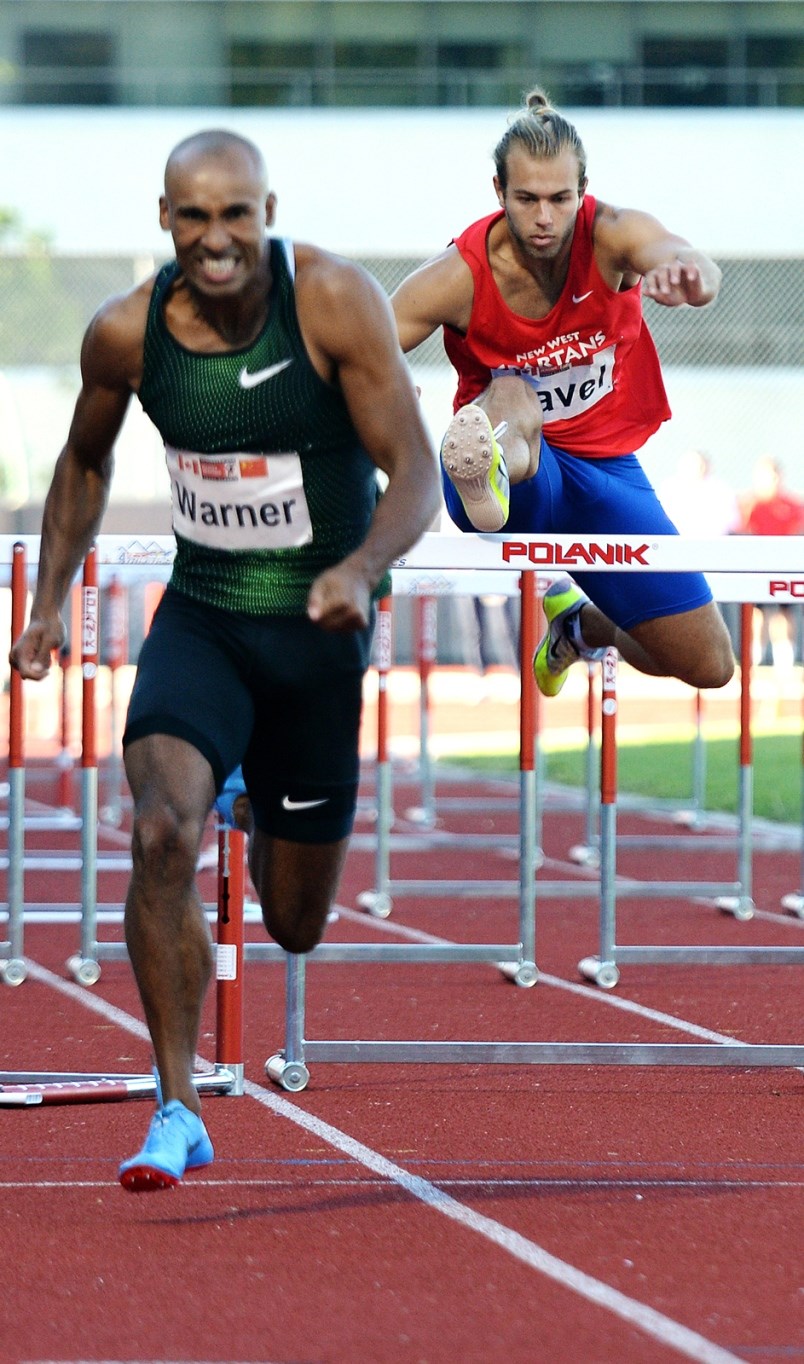Speed painting has been described as creating art against the clock.
So, if hurdling is truly the real art form of track and field, then the indoor 60 metre hurdles is the ultimate fast and furious with the brush. The clock ticks awfully quick. One stroke, two stroke . . . eight seconds and it’s done.
Eight is the number a strong field of B.C.-based hurdlers will be shooting for on Feb. 2 when they line up to contest the Open 60-metre hurdles at the Harry Jerome Indoor Track Classic at the Richmond Olympic Oval.
Reigning champion Ryan Cheng, 28, of the Vancouver Thunderbirds Track Club is expected to go up against UBC hurdlers Bogdan Pavel and Kenneth Schultze, 2017 Canada Summer Games gold medalist Jackson Cheung and Anastas Eliopoulos, the Canadian under-20 record holder in the 110-metre hurdles outdoors.
Cheng, who returned to hurdling in 2017 after an eight-year hiatus, won the Jerome last year in 8.23 seconds, just ahead of Pavel’s 8.33 and Schultze’s 8.35. Eliopoulos, then 18, won the event in 2017 in 8.23, although he was clearing the junior hurdle height of 39 inches. Now, he’s competing at the senior height of 42 inches.
Cheung, a Vancouver native who recently finished up at the University of Guelph, still sees himself as a “full-time athlete,” although he’s also juggling coaching duties with the Richmond Kajaks and his work as a strength and conditioning coach at the Olympic Oval. The 22-year-old has a personal best of 8.14 indoors.
Cheung believes Cheng’s meet record is in jeopardy given the depth of the field, and even suggests that a sub-eight second run isn’t out of the question.
“I think so,” he said in a recent interview. “I think if there’s any time for the record to be broken, it’s the year. I’ve known Bogdan since Grade 9 . . . and I’ve trained with Ryan. We’ve talked a lot of shop.”
Jonathan Cabral and decathlete Damian Warner are the top 110-metre hurdlers in Canada, but Schultze (fifth), Cheng (11th), Pavel (12th) and Cheung (16th) were all highly ranked in 2018. Cheng, a hugely popular online influencer as social media personality Chengman, is very publicly aiming at qualifying for the 2020 Tokyo Olympics. Cheung and Pavel are setting their sights on making Canada’s World University team -- this year in Cheung’s case, in 2021 for Pavel.
A New Westminster native, Pavel battled a hamstring injury for much of last year, but UBC head coach Laurier Primeau says the fourth-year arts student is “looking as good as I’ve ever seen him.”
“Yeah, it feels pretty good right now,” said Pavel, whose 60-metre hurdles PB is 8.19 set last February in Seattle. “I’m getting more and more powerful out of the blocks. I just want to beat my indoor time from last year, If I can do that, it’ll be a good sign for the outdoor season.”
Pavel, who like NCAA All-American Nina Schultz is a New West Spartans Club product, is an advocate of hurdling as an art form, a concept eloquently detailed in some long form articles written by former collegiate hurdler and now North Carolina-based coach Steve McGill.
“I think it’s a pretty underrated event,” says Pavel. “People really don’t understand the difficulties. When I first started track, it was the last thing I ever wanted to do. Now, I really enjoy it, the constant working on technique, the fine details. It’s a much more complicated event than flat out sprinting.”
Given the nuances of the discipline -- how many strides between hurdles, the lean, the vertical axis of the torso, the positioning of the lead and trailing leg -- it takes a long time to learn to hurdle well.
“One aspect of the art of hurdling,” writes McGill, “lies in finding a balance between retaining a competitive drive while still pursuing a greater mastery of the art form. The two can, indeed, go hand in hand. The irony lines in the fat that fast times generally don’t come as a result of trying to run fast, but as a result of trying to tune into the rhythm of the race.
“To me, a hurdler’s rhythm is a very personal thing, as distinctive as a fingerprint.”
For hurdlers, straight sprinting is boring. They relish the challenge of obstacles in their path and the fact that pure speed isn’t as important as harmonizing the dance of rhythm in motion.
“(It) verifies the point that hurdlers are seeking something more, something greater than the ego-centred gratification that comes with winning races,” writes McGill. “Hurdlers are searching for a feeling.”
Cheung says he’s more into the science of hurdling, into compiling data on all different types of hurdlers and maximizing the “extreme” physical requirements that are necessary. “There is no pixie dust,” he says, adding that “most people won’t ever get a taste of that perfect rhythm.”



